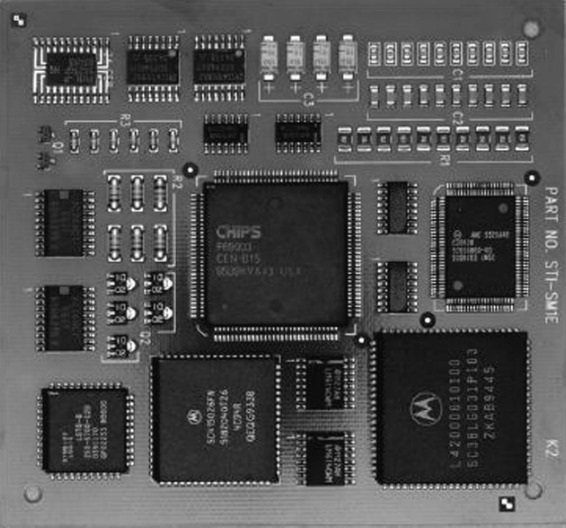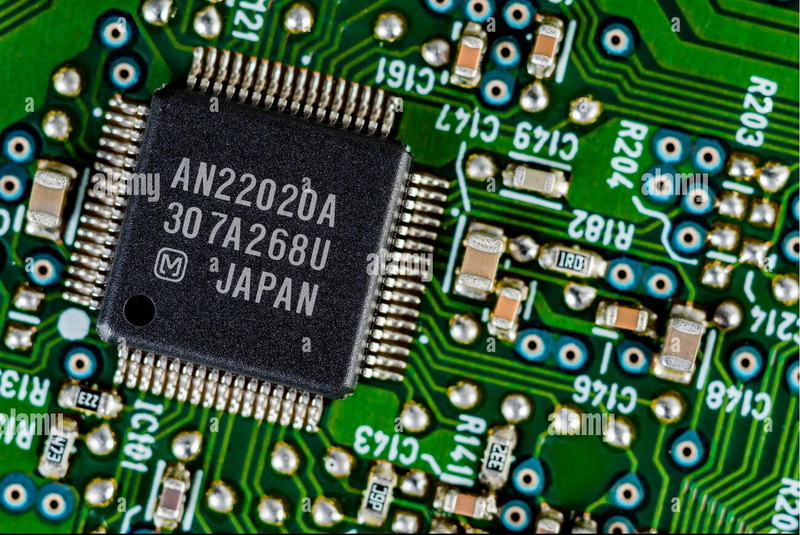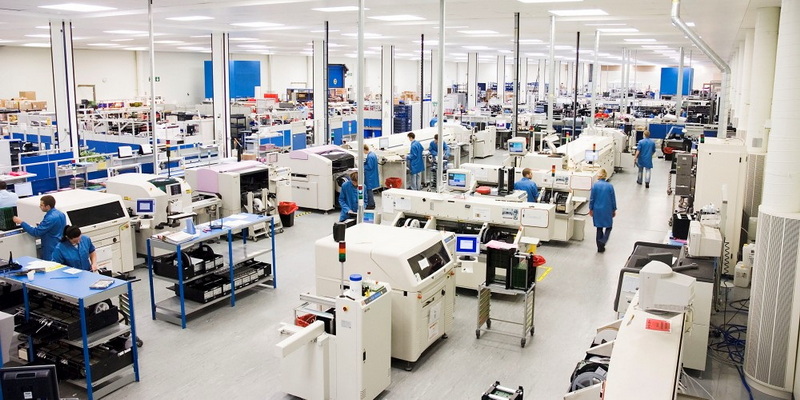Content Menu
● Introduction
● Understanding SMT Stencils
>> Importance of SMT Stencils
● The Process of Making an SMT Stencil
>> Step 1: Design Preparation
>> Step 2: Material Selection
>> Step 3: Laser Cutting or Etching
>> Step 4: Surface Treatment
>> Step 5: Quality Inspection
>> Step 6: Packaging and Shipping
● Technologies Enhancing SMT Stencil Manufacturing
>> Automated Laser Systems
>> 3D Printing
>> Software Innovations
● Best Practices for Using SMT Stencils
● Common Challenges in SMT Stencil Manufacturing
>> Solder Paste Issues
>> Alignment Problems
>> Material Limitations
● Future Trends in SMT Stencil Technology
>> Nano-Coatings and Surface Treatments
>> Smart Stencils
>> Artificial Intelligence Integration
● Conclusion
● FAQ
>> 1. What materials are commonly used for SMT stencils?
>> 2. How does laser cutting improve SMT stencil manufacturing?
>> 3. What are some common issues faced with SMT stencils?
>> 4. How often should SMT stencils be cleaned?
>> 5. Can 3D printing be used for making SMT stencils?
● Citations:
Introduction
Surface Mount Technology (SMT) is a method used to mount electronic components directly onto the surface of printed circuit boards (PCBs). One of the critical components in this process is the SMT stencil, which is used to apply solder paste onto the pads of the PCB before component placement. This article will explore the various steps involved in making an SMT stencil, the materials used, and the technologies that enhance its effectiveness. Additionally, we will delve into common challenges faced during the stencil manufacturing process and best practices for utilizing SMT stencils effectively.

Understanding SMT Stencils
Before diving into the manufacturing process, it's essential to understand what an SMT stencil is and its purpose. An SMT stencil is a thin sheet, typically made of stainless steel or other metal, with openings that correspond to the pads on a PCB. The stencil allows for precise application of solder paste, ensuring that each pad receives the correct amount needed for soldering components.
Importance of SMT Stencils
- Precision: Ensures accurate solder paste application.
- Efficiency: Speeds up the assembly process.
- Quality Control: Reduces defects in solder joints.
The Process of Making an SMT Stencil
Creating an SMT stencil involves several steps, each crucial for ensuring high quality and precision. Here's a detailed breakdown of the process:
Step 1: Design Preparation
The first step in making an SMT stencil is designing it based on the PCB layout. This involves:
- CAD Software: Using computer-aided design (CAD) software to create a digital representation of the stencil.
- Design Rules: Adhering to design rules that dictate dimensions and spacing based on component sizes and types.
Step 2: Material Selection
The material chosen for the stencil significantly impacts its performance. Common materials include:
- Stainless Steel: Offers durability and precision.
- Nickel: Provides excellent corrosion resistance.
- Polyimide: A flexible option for specific applications.
Step 3: Laser Cutting or Etching
Once the design is finalized and materials are selected, the next step involves cutting or etching the stencil.
- Laser Cutting: A highly precise method that uses a laser to cut out openings in the material according to the design.
- Chemical Etching: Involves applying a chemical solution to remove material selectively, creating openings.
Step 4: Surface Treatment
After cutting, stencils often undergo surface treatment to enhance performance:
- Deburring: Removing sharp edges from cut openings to prevent damage during use.
- Coating: Applying a coating can reduce solder paste adhesion, making cleaning easier.
Step 5: Quality Inspection
Quality control is essential in ensuring that stencils meet specifications. This includes:
- Dimensional Checks: Verifying that all openings are within tolerance levels.
- Visual Inspection: Checking for defects or irregularities in the material.
Step 6: Packaging and Shipping
Once inspected, stencils are cleaned, packaged, and shipped to customers. Proper packaging is crucial to prevent damage during transit.
Technologies Enhancing SMT Stencil Manufacturing
Advancements in technology have significantly improved SMT stencil manufacturing processes. Some notable technologies include:
Automated Laser Systems
Automated laser systems allow for faster and more precise cutting of stencils. These systems can adjust settings on-the-fly based on real-time feedback, enhancing accuracy.

3D Printing
3D printing technology has emerged as a viable option for creating stencils with complex geometries that traditional methods may not achieve easily. This method allows for rapid prototyping and customization.
Software Innovations
Advanced software solutions enable better design capabilities, including simulation tools that predict how solder paste will behave when applied through stencils. This helps in optimizing designs before physical production.
Best Practices for Using SMT Stencils
To maximize the effectiveness of SMT stencils during assembly, consider these best practices:
- Proper Alignment: Ensure accurate alignment between the stencil and PCB during application.
- Consistent Pressure: Apply consistent pressure when spreading solder paste to achieve uniformity.
- Regular Cleaning: Clean stencils regularly to prevent paste build-up and ensure consistent performance.
Common Challenges in SMT Stencil Manufacturing
Despite advancements in technology and processes, several challenges persist in SMT stencil manufacturing:
Solder Paste Issues
Solder paste problems can arise from insufficient or excessive amounts being applied through stencils. These issues can lead to defects such as:
- Solder Bridges: Excessive solder connecting adjacent pads.
- Insufficient Solder Joints: Resulting from inadequate paste application.
To mitigate these issues:
- Optimize stencil thickness and area ratio.
- Ensure proper squeegee pressure and speed during application.
Alignment Problems
Misalignment between the stencil and PCB can cause significant defects during assembly. To avoid this:
- Use high-quality alignment systems in printing machines.
- Regularly calibrate equipment to maintain accuracy.
Material Limitations
Different materials have varying properties that may affect their suitability for specific applications. For instance:
- Stainless steel offers durability but may be less flexible than polymer options.
- Polymer stencils are easier to handle but may not provide the same level of precision as metal stencils.
Manufacturers must choose materials based on their specific production needs and constraints.
Future Trends in SMT Stencil Technology
The evolution of SMT stencil technology continues to drive innovation within electronics manufacturing. Key trends include:
Nano-Coatings and Surface Treatments
Advanced nano-coatings improve solder paste release and reduce adhesion, enhancing print quality and fine-pitch component printing. They also require less frequent cleaning, prolonging stencil life.
Smart Stencils
Smart stencils equipped with sensors can monitor pressure and temperature during printing processes. This real-time feedback allows for adjustments that optimize performance while extending lifespan.
Artificial Intelligence Integration
AI could revolutionize solder paste printing by analyzing data from inspection systems to predict potential defects. This proactive approach would help manufacturers maintain high-quality standards while adapting quickly to design changes.
Conclusion
The process of making an SMT stencil is intricate and requires careful attention to detail at every step. From design preparation through material selection and cutting techniques to quality inspection and shipping, each phase plays a vital role in ensuring that stencils perform optimally in PCB assembly. As technology continues to evolve, so too will the methods used in stencil manufacturing, leading to even greater precision and efficiency in electronic component assembly.
Understanding common challenges faced during this process allows manufacturers to implement best practices that enhance productivity while maintaining high-quality standards. Innovations such as smart stencils and AI integration promise exciting advancements that will further improve efficiency in PCB manufacturing processes.

FAQ
1. What materials are commonly used for SMT stencils?
Common materials include stainless steel, nickel, and polyimide. Stainless steel is favored for its durability, while polyimide offers flexibility for specific applications.
2. How does laser cutting improve SMT stencil manufacturing?
Laser cutting provides high precision by accurately cutting openings according to design specifications, which enhances overall quality and reduces waste.
3. What are some common issues faced with SMT stencils?
Common issues include misalignment during application, solder paste build-up on stencils, and wear over time leading to inaccurate paste deposition.
4. How often should SMT stencils be cleaned?
Stencils should be cleaned regularly after each use or when changing solder paste types to prevent contamination and ensure consistent application.
5. Can 3D printing be used for making SMT stencils?
Yes, 3D printing can be used to create complex geometries for SMT stencils that traditional methods may find challenging, allowing for rapid prototyping and customization.
Citations:
[1] https://www.stencilsunlimited.com/blog/stencil-manufacturing-technologies/
[2] https://nagisha.co.id/smt-stencil-roll/
[3] https://jlcpcb.com/blog/guide-to-smt-stencils-in-pcb-assembly
[4] https://www.stentech.com/company/cvd-treatment-for-smt-stencils
[5] https://www.pcb-hero.com/blogs/lisas-column/surface-mount-technology-common-problems-and-solutions-for-efficient-smt-assembly
[6] https://www.7pcb.com/blog/stencil-technology-smt-production
[7] https://www.twistedtraces.com/blog/understanding-smt-stencils-the-backbone-of-electronics-manufacturing
[8] https://www.macrofab.com/blog/innovations-in-solder-paste-printing-technology/
[9] https://www.ieworldconference.org/content/WP2022/Papers/50-GDRKMCC-22.pdf
[10] https://insightsolutionsglobal.com/smt-process-common-quality-issues-and-solutions/




















